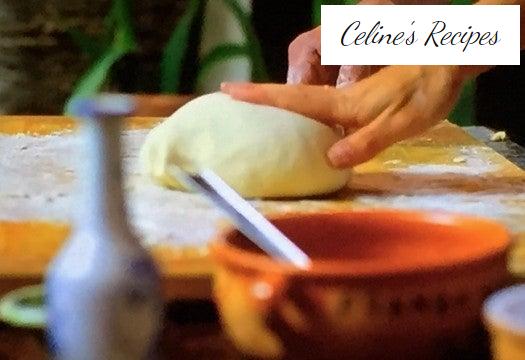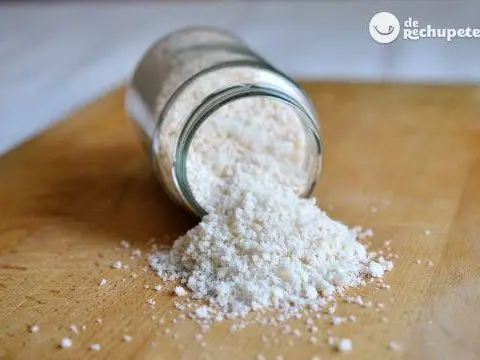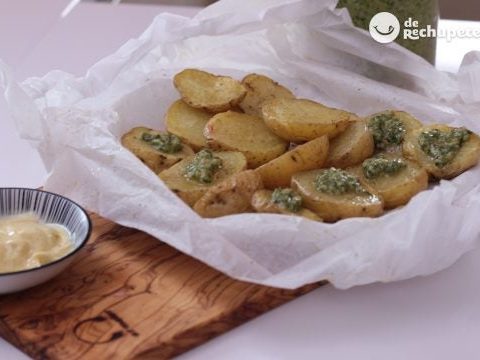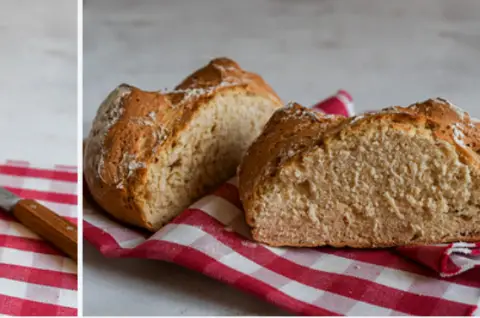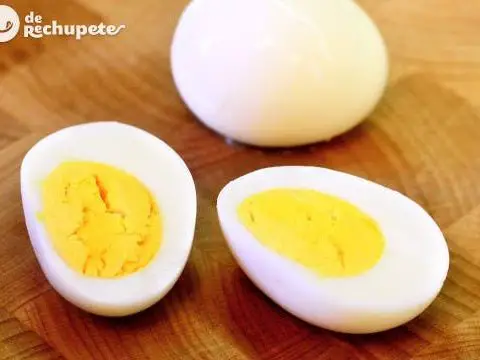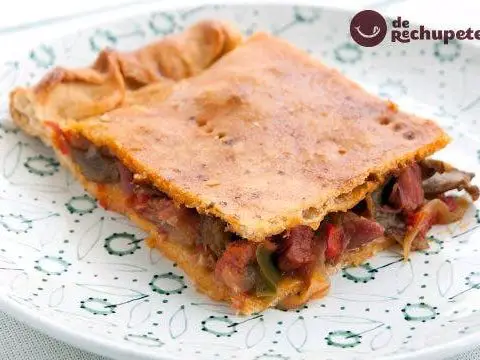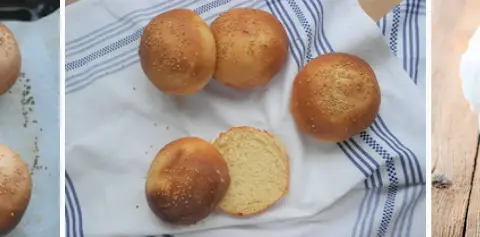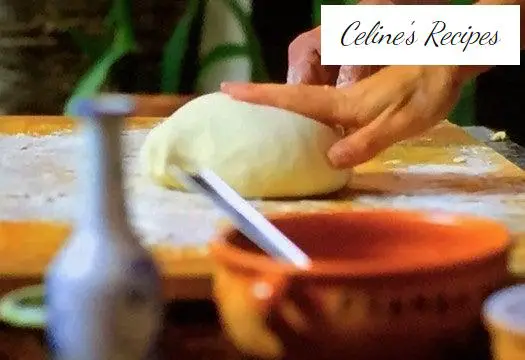
Info.
- Easy
- 25 minutes
- For 4 people
- 0.8 € / person
- 345kcal per 100g.
This is the definitive guide to make a good homemade pizza
Because making a good homemade pizza is possible! And you will all be thinking that the key is in the pizza dough .
Well, it’s an important point, that’s for sure, but there are other aspects to take into account so that our homemade pizza turns out to be excellent.
.instagram-follow img{width:100%;height:auto;} @media screen and (min-width: 1000px) {.instagram-follow {display:block;clear:both;float:right;width:50%;margin-left:1em;}}
There are very good pizzas that we can buy in pizzerias or restaurants, but there is nothing like making it at home, with the ingredients that we like the most. Within the limitations, since we will use a conventional oven, it is possible to approach the pizzas that can serve us in specialized Trattoria / Pizzerias.
As we have said, dough is essential, and to make it in proper conditions we need to take it easy.
One of the most visited blog recipes is Italian Pizza Dough , which I have been refining as I have made pizzas at home.
My good Italian friend Aldo taught me how to make this pizza dough recipe , and since then the way it has been made has changed and we have enjoyed authentic Italian-style pizzas.
So let’s go with this Guide, which I hope will help you in this task and not die trying.
First of all, a little planning
Preparing a good pizza at home cannot be a reason for improvisation or an impulse. It is necessary to decide in advance when we are going to taste it, what ingredients we are going to use and also how many diners we are going to be.
Keep in mind that the process of kneading and softening the dough will take you at least 2 hours, so I do not recommend going in a hurry. So leave the sudden cravings for another time and plan your homemade pizza with reasonable time.
In Rechupete Recipes you can check:
How to prepare Italian Pizza Dough. Step by step recipe
What materials will we need
In principle we will not need anything very specific. With the utensils that we usually have at home we can be successful. And the oven, because with the conventional one we will also manage.
A basic list of needs would be :
- A large bowl / bowl
- A scale or quantity meter
- Plastic film
- A clean cloth
- Baking paper
- To be more “professional”, a dough scraper / cutter (usually made of plastic, very cheap), an oil sprayer and a baking stone that will help us to increase the temperature that the dough receives will be useful. .
The basic ingredients for pizza
The pizza dough is prepared with very basic ingredients, which we always have at home: flour, water, yeast, salt and extra virgin olive oil.
- The quality and “strength” of strength flour is a key point. There are big differences between one brand and another, so try to use quality strength flour as much as possible.
- These “strength” flours, with more gluten content, will favor the handling of the dough, which will be more elastic, tender and soft. They are also suitable for the correct growth of the dough in the resting or softening process. Conventional flours, looser, will give us worse results.
- At home you can experiment with a mixture of flours, using 10% wholemeal or other flour, to give it a personalized touch.
- As for the yeast, it can be used dry from bakery or fresh, although always respecting the appropriate proportions: for 1 kilo of flour of force, 8 gr will be used. of dry yeast or 25 gr. of the fresh.
Important: for pizza dough, do not use chemical yeast powder (Royal type). These are gasifying, and only act in the baking process, so the dough will not grow during resting. This is perfect for cupcakes, but not for doughs.
- Water will influence the taste of the dough, so if the water you have at home does not convince you or has any kind of flavor, it is recommended to use bottled mineral water.
- Finally, the best quality oil, which is olive and extra virgin. It will bring a soft and special flavor to the dough.
We get down to the dough
- The work surface must be wide, clean and clear of elements that we will not need. Have all the ingredients and utensils well at hand. A marble, stone or similar countertop is the perfect surface to prepare our dough.
- Before starting, we read carefully the steps to follow, so as not to improvise on the go. Weigh all the ingredients and arrange them in the work area.
- The first step is always to arrange the flour in a large bowl, make a hole in the middle, and pour the water plus the dissolved yeast. Then the oil, and finally the salt. Mix with a spoon, without kneading and cover with transparent film
- If we are not going to work with it at the moment, we can leave it in the fridge, between 1 and 3 hours, so that it is “fattening”. If we are in summer or in a warm area, an hour will suffice. When the time to work approaches, take it out a while before the cold, so that it reaches room temperature.
- Returning to the previous point, we continue stirring with the spoon, until we check how it is taking body. A sticky mixture but with a certain firmness.
- We pour enough flour on the counter, remove the dough from the bowl and work it with our hands. To avoid sticking too much, you can wet your hands with cold water.
- We begin to knead with the hands. We will stretch it like a churro, and then spiral it several times. We put back together and repeat the process. Little by little the dough will gain elasticity and will be more manageable.
- During the process, we will add a little flour, as requested by the dough. But it should not be abused either, with about 100 gr. we will get older to work the mass of 1 kilo. The correct measurement would say that it is ” until the flour sticks to the hands .”
- Knead for 10/12 minutes, until we check that the dough is homogeneous and elastic. We make a ball, and we pass it back to the bowl, which we previously floured. Cover with a clean (cotton) cloth and let stand at least 1 hour, until it increases its size twice.
Stretch the dough
- To know when it is ready, I use the following trick: I press the dough with a finger, and if it returns to its original position, it means that the dough is ready to prepare the pizza.
- With the amounts that I have in my Pizza Dough recipe it will give you for several units. For example, with a 250 gr. Ball. He gives you for a pizza for 2 people. The dough can be frozen without problem.
- Wrap it in transparent film, and thaw it 24 hours before, when you want to use it.
- When you are going to roll out the dough, do not use the rolling pin. Flour your hands well and roll out the dough with the help of your palms, being careful not to break it.
- Little by little you will give it the round (or square) shape, and with the fingers it is contoured with a border. For the more seasoned, you can try throwing the dough up and picking it up again with your fists, in true pizzeria-style.
Do not stop preparing any of the homemade pizza recipes that we have on the blog.
You can see all the photos of the step by step of the recipe of the pizza dough in this album, do not miss any detail and it will be perfect.
Pizza dough topping
- While our dough grows during fermentation, it is time to prepare the ingredients that we are going to use in our pizza. We need to make a “mise en place” that allows us to complete the pizza without delay.
- Once the ingredients are chosen, we will wash and cut them, as necessary. The quality of them will be important for the final result.
- Choose combinations of ingredients that match well with each other, and don’t use too many. My recommendation is not to use more than 4/5 ingredients for the coverage.
- On the dough there will be a base of tomato sauce, preferably homemade, which we will spread evenly over the entire surface.
- On the tomato, we will distribute the cheese, in portions or crumbled. We will use fresh mozzarella, which can be combined with other types of cheese: Parmesan, gorgonzola, ricotta, Manchego cheese, Arzúa-Ulloa, etc.
- Then we will have the rest of the ingredients, distributed equally, throughout the pizza.
- A good choice is to incorporate fresh aromatic herbs, such as basil or rosemary. They will give our pizza a special touch.
- We flour the baking tray and place the pizza on it.
- You can also place a baking paper, this way it will be easier to remove the pizza.
Baking pizza
- Since we are going to have to cook with the conventional oven at home, we will have to create the most similar conditions to a pizza oven, and thus be successful with pizza. Such an oven reaches about 300-350º C and the home oven does not usually exceed 250º C.
- We will preheat, at maximum power (but not grill), with the heat up / down function, about 15/20 minutes. If you have a baking stone, insert it while the oven is heating.
- We will place the tray in the central part of the oven, with the pizza on it. We will bake about 8/10 minutes at 250º C.
- At this time we should have it ready, although it may vary depending on the thickness of the dough or what “hurries” your oven. Keep in mind that many “lie” and do not give the actual temperature that we set on the thermostat.
- A trick to check that our pizza is in its right place is to lift the base with a spatula (or similar).
- If we see that the bottom is starting to toast / brown, it means that the pizza is ready to remove from the oven.
- Once outside, we let it rest for a few minutes. In order not to burn ourselves when tasting it and so that the ingredients of the coating settle with the cheese and tomato base.
- With all that we have discussed it is very clear that making a good homemade pizza is possible, although it is not necessary to leave everything to improvisation.
- The final recommendation is that you have a very cold beer and enjoy your lady pizza. It sure will be yummy.
Top 5 Homemade Pizza Recipes at Yummy Recipes
- The classic homemade four cheese pizza
- A delicious Whimsical Pizza
- The traditional Neapolitan Pizza
- A vegetable pizza
- Galician Lacón Pizza with turnip tops and Arzúa-Ulloa cheese
